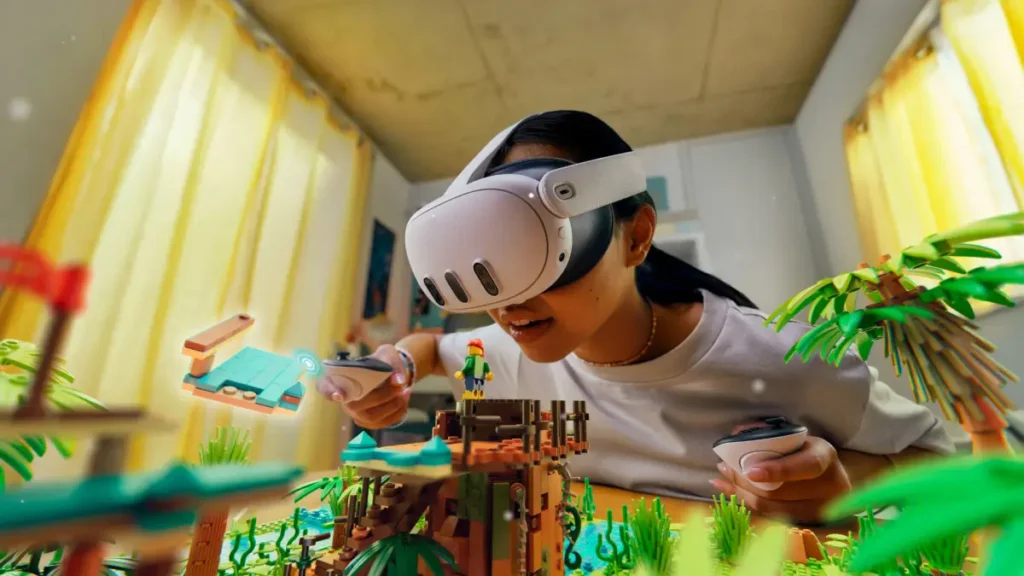Meta removes the cherished ‘Stream to Chromecast’ feature from Meta Quest headsets, sparking user frustration. The change, unexplained by Meta, forces users to find alternative ways to share VR experiences. With the removal’s impact on user engagement and Meta’s silence on the matter, questions linger about the company’s VR strategy and the future of immersive technologies.
Table of Contents
What Happened to Chromecast?
Meta, without giving an official explanation, has taken away the ability to cast VR gameplay directly to a Chromecast. Now, users can only cast to a phone or computer screen. The documentation for the headsets now says that “Chromecast is not fully supported with Meta Quest.“
Why Did This Happen?
There are guesses about why Meta made this change. It could be because the ‘Stream to Chromecast’ feature was not very reliable. Another idea is that Meta wants users to use its own app for streaming, aligning with its plan to keep everything within its own ecosystem.
A week before removing the feature, Meta’s official YouTube account released a video about casting to a screen but didn’t mention TV or Chromecast. This hints that Meta intentionally moved away from the ‘Stream to Chromecast’ option.
What Can Users Do Now?
Users are looking for ways to continue sharing VR experiences on larger screens. Two solutions are casting to a TV via a phone or mirroring the feed to a computer and connecting it to a TV through HDMI. But both options have their challenges, like delays and complicated processes.
The ‘Stream to Chromecast’ option was known for being unreliable, and Meta might be exploring new ways to make VR casting easier for users. The change might be driven by a desire to reach a broader audience as external devices like Chromecast become less popular.

Quest 3: A Big Player Despite Changes
Amidst all this, Meta Quest 3 is getting attention as a significant device in Extended Reality (XR). Despite initial doubts, Meta Quest 3 was named Product of the Year for 2023. This is notable, especially because the writer, who is claustrophobic and wears glasses, had positive experiences with the device.
Also Read: The Rise of Spatial Computing: Big Tech Revolution in 2024!
The article shares the writer’s journey with Meta Quest 3, highlighting its potential to change how we use technology. It addresses concerns about motion sickness and comfort for glasses wearers, showing how Meta Quest 3 is making a mark in the VR industry.
How Users Feel About the Change
The removal of the Chromecast feature has led to discussions among users. Some think removing it was justified because it wasn’t reliable. Others are frustrated with the sudden change.
The article includes stories from users, sharing their experiences and challenges in adapting to the new casting options. It raises questions about Meta’s decision and how it might affect user engagement, giving a glimpse into the Quest community’s feelings.
Why Did Meta Stay Quiet?
Meta removing the Chromecast feature without an official announcement has left users curious. The lack of communication from Meta about why they made this change has led to speculation about where Meta is heading with its VR platform.
As users adjust to the loss of a key feature, Meta faces questions about the future of its Meta Quest headsets. The article combines different stories – the surprise removal, user experiences with Meta Quest 3, and broader questions about Meta’s decisions.
Users now have to get used to the new casting options and find ways around the change while waiting for more insights from Meta about the future of its immersive technologies. The Meta Quest world keeps evolving, offering both opportunities and challenges for VR fans.

Read More: Countdown Begins: Apple Vision Pro Launch on Jan 27 at $3499



